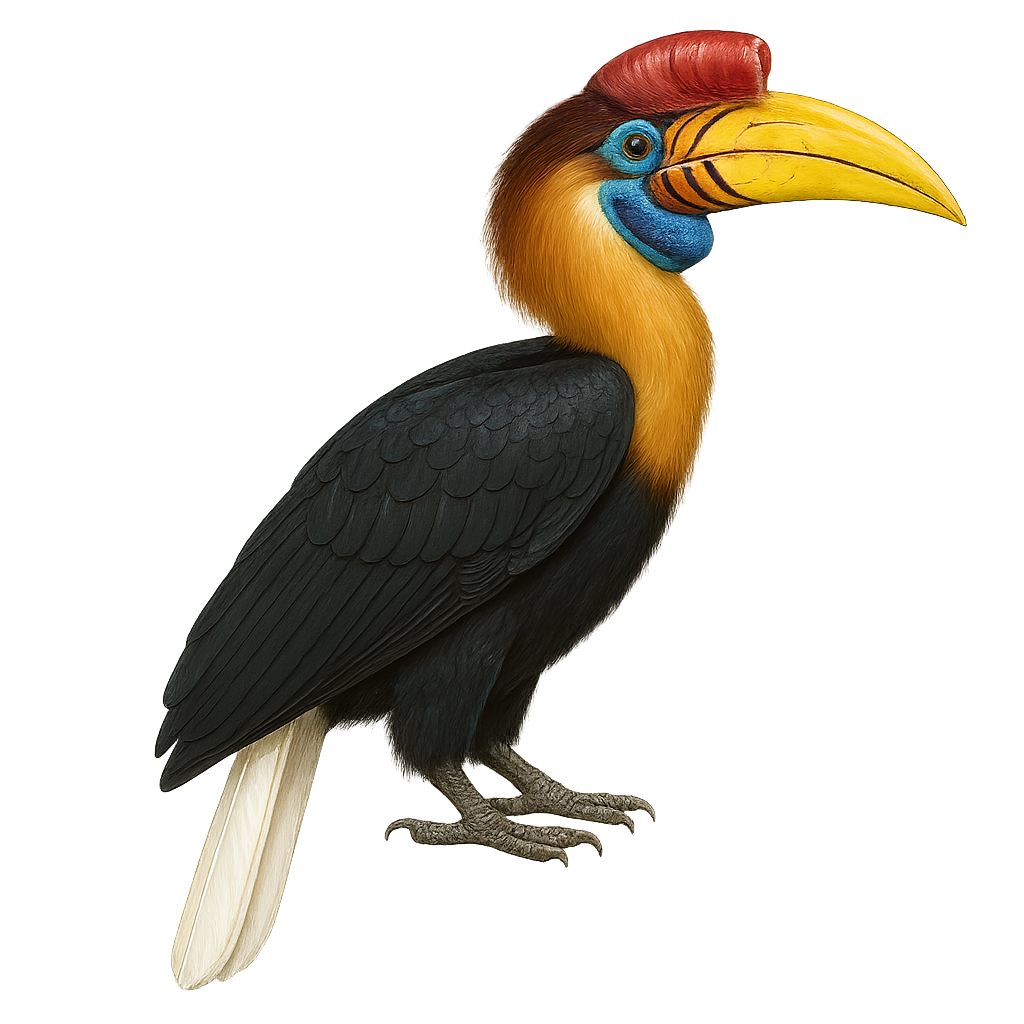Your wildlife photography guide.
Explore the knobbed hornbill in detail, study its behavior, prepare your shots.
Where to observe and photograph the knobbed hornbill in the wild
Learn where and when to spot the knobbed hornbill in the wild, how to identify the species based on distinctive features, and what natural environments it inhabits. The WildlifePhotographer app offers tailored photography tips that reflect the knobbed hornbill’s behavior, helping you capture better wildlife images. Explore the full species profile for key information including description, habitat, active periods, and approach techniques.
Knobbed Hornbill
Scientific name: Rhyticeros cassidix

IUCN Status: Vulnerable
Family: BUCEROTIDAE
Group: Birds
Sensitivity to human approach: Suspicious
Minimum approach distance: 10 m
Courtship display: February to March
Incubation: 38-40 jours
Hatchings: March to May
Habitat:
Tropical forests, rainforests, wooded areas
Activity period :
Primarily active during the day, with peak activity in the morning and late afternoon.
Identification and description:
The Knobbed Hornbill, Rhyticeros cassidix, is a striking bird native to the tropical forests of Sulawesi, Indonesia. Recognizable by its large yellow bill topped with a bright red casque, this bird has a glossy black plumage with a white throat in males and blue in females. Measuring up to 90 cm in length, it is one of the largest hornbills. It primarily feeds on fruits but also consumes insects and small animals. The Knobbed Hornbill plays a crucial role in seed dispersal, aiding forest regeneration. Unfortunately, it is threatened by deforestation and hunting, leading to its classification as a vulnerable species by the IUCN.
Recommended lens:
400mm – adjust based on distance, desired framing (portrait or habitat), and approach conditions.
Photography tips:
To photograph the Knobbed Hornbill, it's advisable to use a telephoto lens of at least 400mm to capture detailed images from a distance. The tropical forests where it resides can be dark, so adjust the ISO to compensate for low light. Be patient and discreet, as this bird can be suspicious. Early morning hours are preferable for better lighting and increased bird activity. A tripod can be useful to stabilize your camera, especially if using slower shutter speeds.
The WildlifePhotographer App is coming soon!
Be the first to explore the best nature spots, track rutting seasons, log your observations, and observe more wildlife.
Already 1 431 wildlife lovers subscribed worldwide

